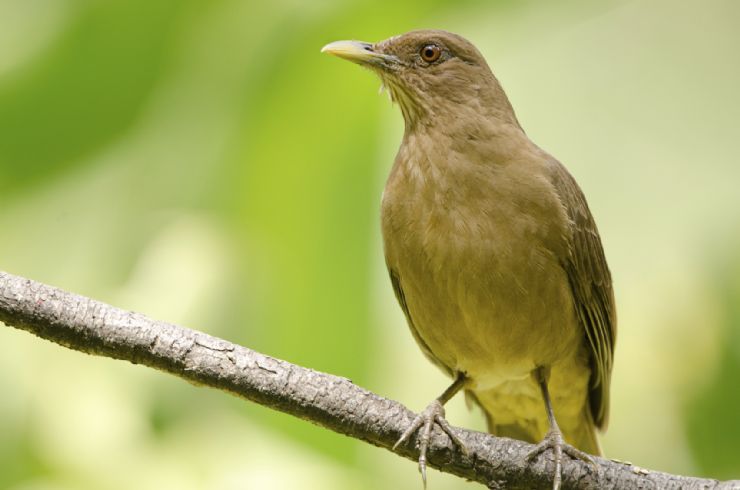 Costa Rica's national bird, Clay-colored Thrush
Costa Rica's national bird, Clay-colored Thrush

Big trees in La Sabana Park, home of El Yigüirro |

Clay-colored Thrush, the national bird, in La Garita |
With its unmistakable tune and people-friendly character, the clay-colored thrush is the national bird of Costa Rica. If only we had national amphibian! The melodious thrush, known locally as the Yigüirro, is one of the country's most common birds. While the species ranges from South Texas to northern Colombia, it holds a special place in the heart of Ticos.
In January 1977 the clay-colored thrush was designated as Costa Rica's bird, under the government of Mr. Daniel Oduber Quiros. It was chosen in large part for its gorgeous song, which represents the arrival of the green seasons. I guess both humans and frogs wish we had a good voice. My "ribbit, ribbit," or "cruaa, cruaa" as the sound is pronounced in Spanish, isn't quite as appealing as the bird's ballad.
The Yigüirro stands about 23 centimeters tall - that's about twice as long as me - and weighs around 74 grams. Unlike many other species of birds, both sexes of the clay-colored thrush exhibit the same colors. They have a cream-colored stomach, yellow-brown wings and a yellowish bill. Instead of walking, these birds hop - I can relate! Once I tried to play leap frog with them, but I don't think they cared much for it.
7 Days / 6 Nights
Starting at $779 per person
A resident of open places, the bird feeds on a variety of fruit trees. Sometimes I like to climb to the the treetops to get on its level. Though they feed in the canopy searching for nutritious fruits, clay-colored thrushes also go digging in the ground with their beaks to gather earthworms, snails, insects and other small animals - luckily, frogs don't make that list.
Did you know that the bird was once labeled the clay-colored robin? And before that it was known as the Gray's thrush, named after a British ornithologist. Eventually scientists changed its family from robin to thrush. Still, the bird, in both its song and shape, has been likened to the American Robin. After the bird settles down with a mate, it builds a heavy nest made of grass, leaves, feathers and mud above ground. I've seen a few of these nests in the windowsills of my human friends. Typically, the clay-colored thrush lays two to four pale blue eggs between March and July.
The Irresistible Serenade
The Yigüirro was picked as the national bird for a number of reasons. First, it tends to live next to humans, staying close to houses and settlements, which has made it well-known among Ticos in both rural and suburban environments. Because of this close relationship, the bird has been mentioned in many of Costa Rican's folk songs, poems, novels and short stories. But, as I said before, the clay-colored thrush also has a melody of its own.
The males are embraced for their enchanting song. During mating season they serenade prospective mates with a flattering tune that even I can't help but sing along to. The song is low-pitched and has a steady tempo, consisting of slurred musical phrases that are repeated. In Costa Rica, their mating season usually lasts from April through June, which overlaps with the start of the green season. As a result, farmers have understood the clay-colored thrush's song as the herald of coming rains.
Although Costa Rica is home to countless colorful flashy birds, the clay-colored thrush's modesty and pleasant personality has earned it a place in the country's history. With all humility, as chance has allowed me to serve as Costa Rica's poster-animal, red-eyed tree frogs and the clay-colored thrush share somewhat of the national pedestal!
 The famous Yigüirro (Clay-colored Thrush), Costa Rica's national bird
The famous Yigüirro (Clay-colored Thrush), Costa Rica's national bird
